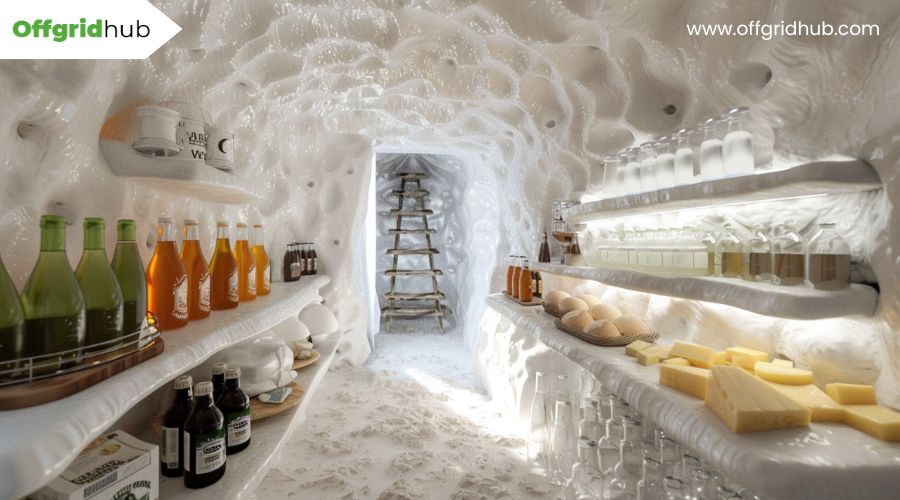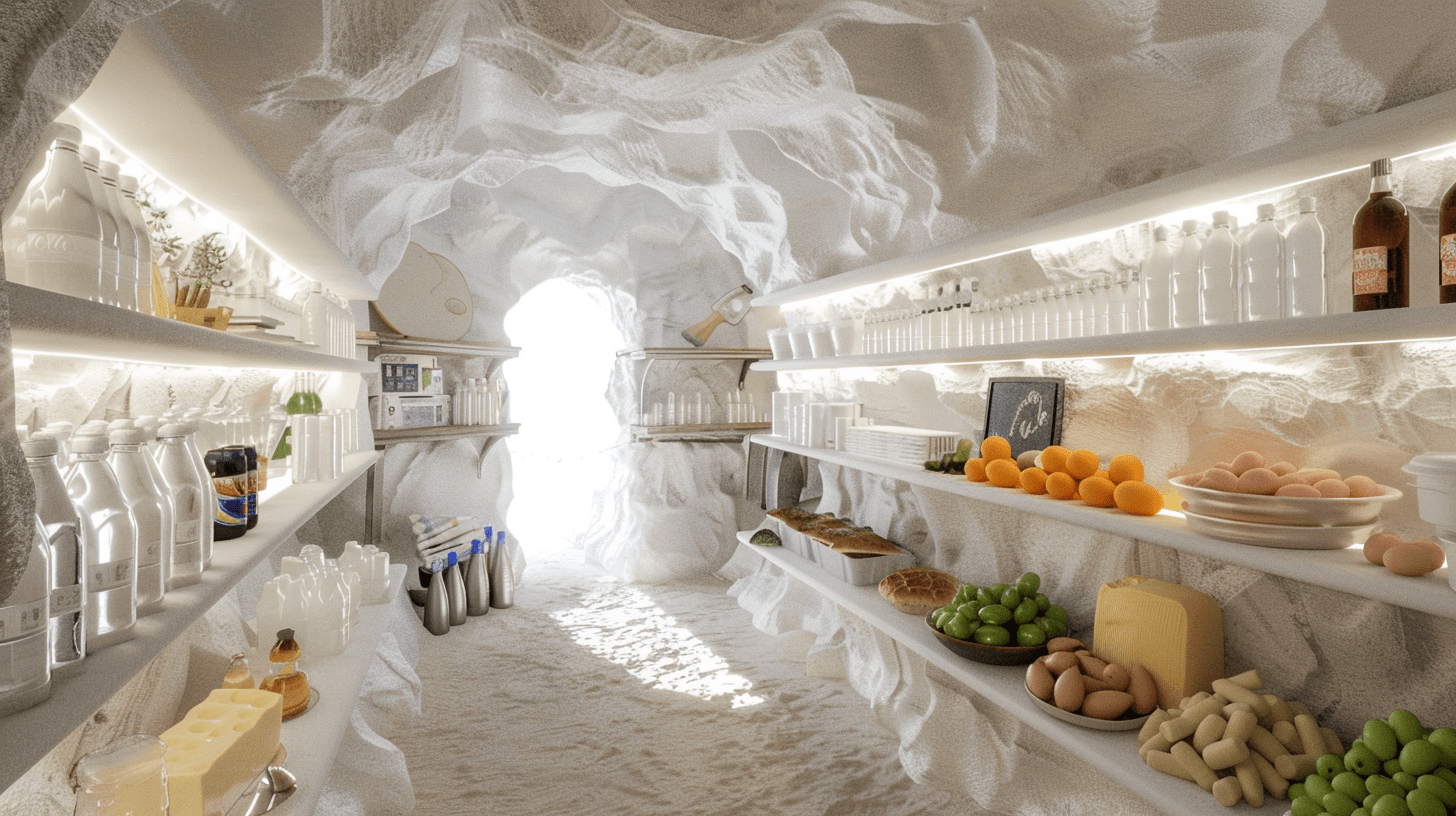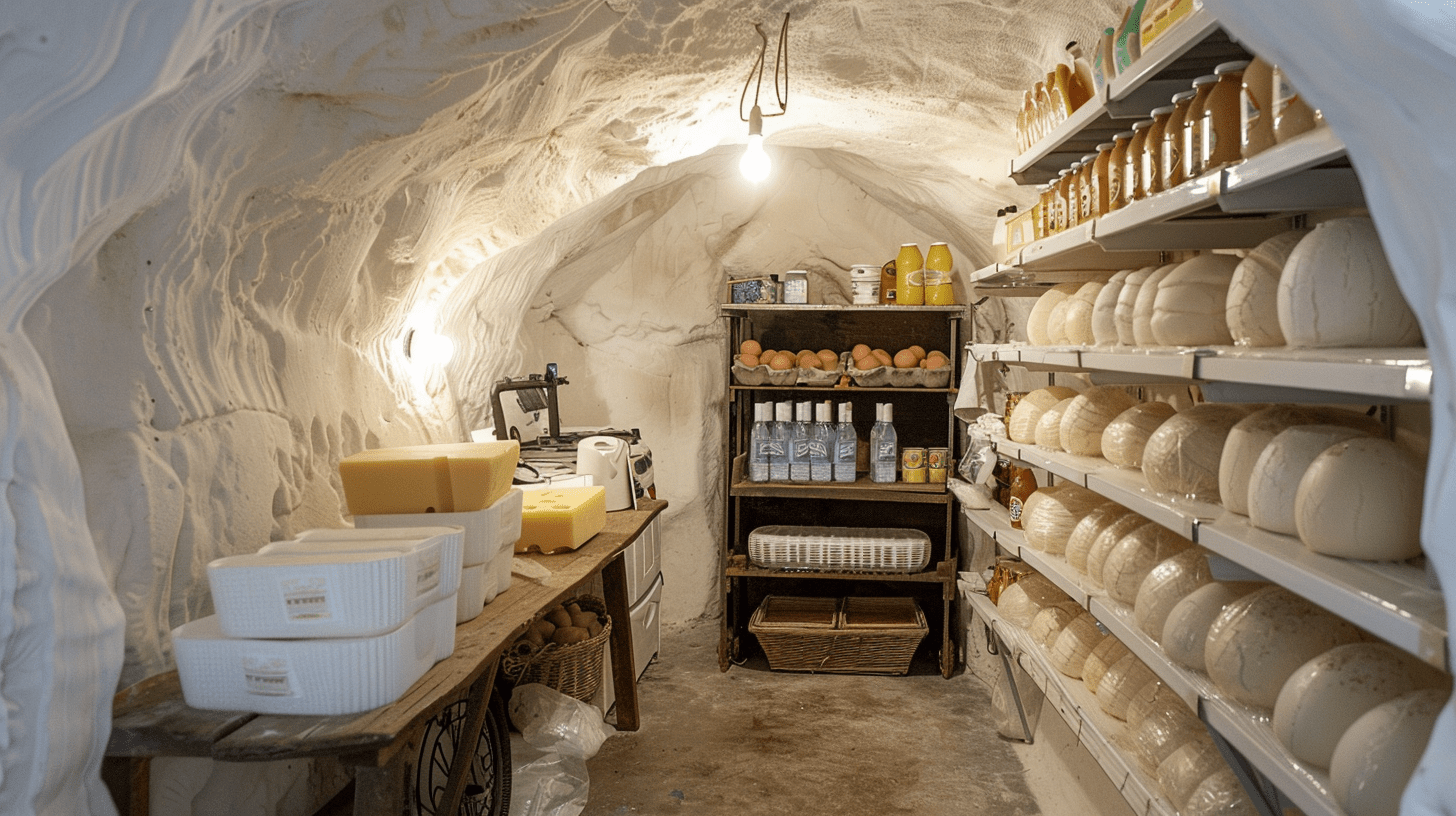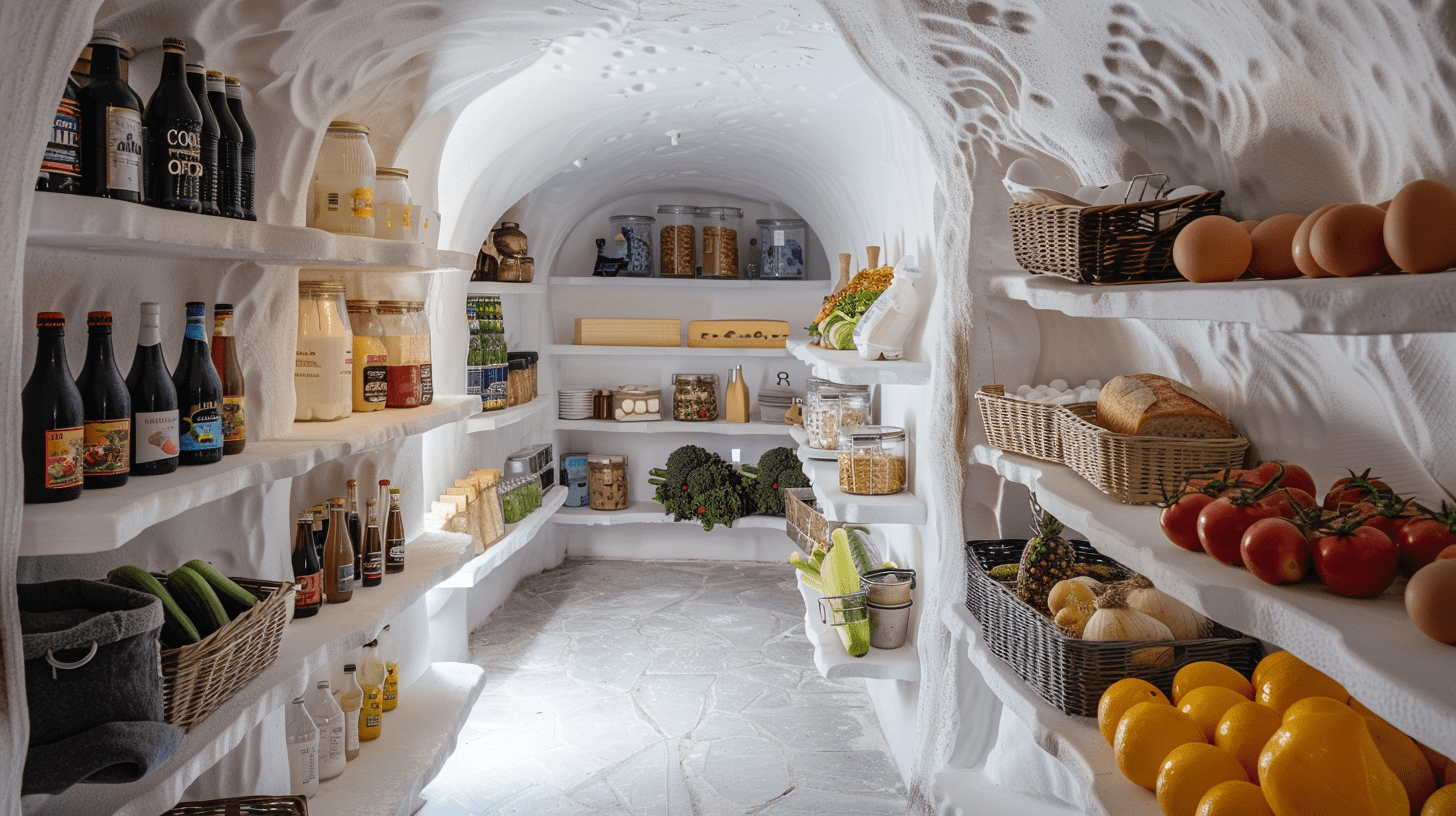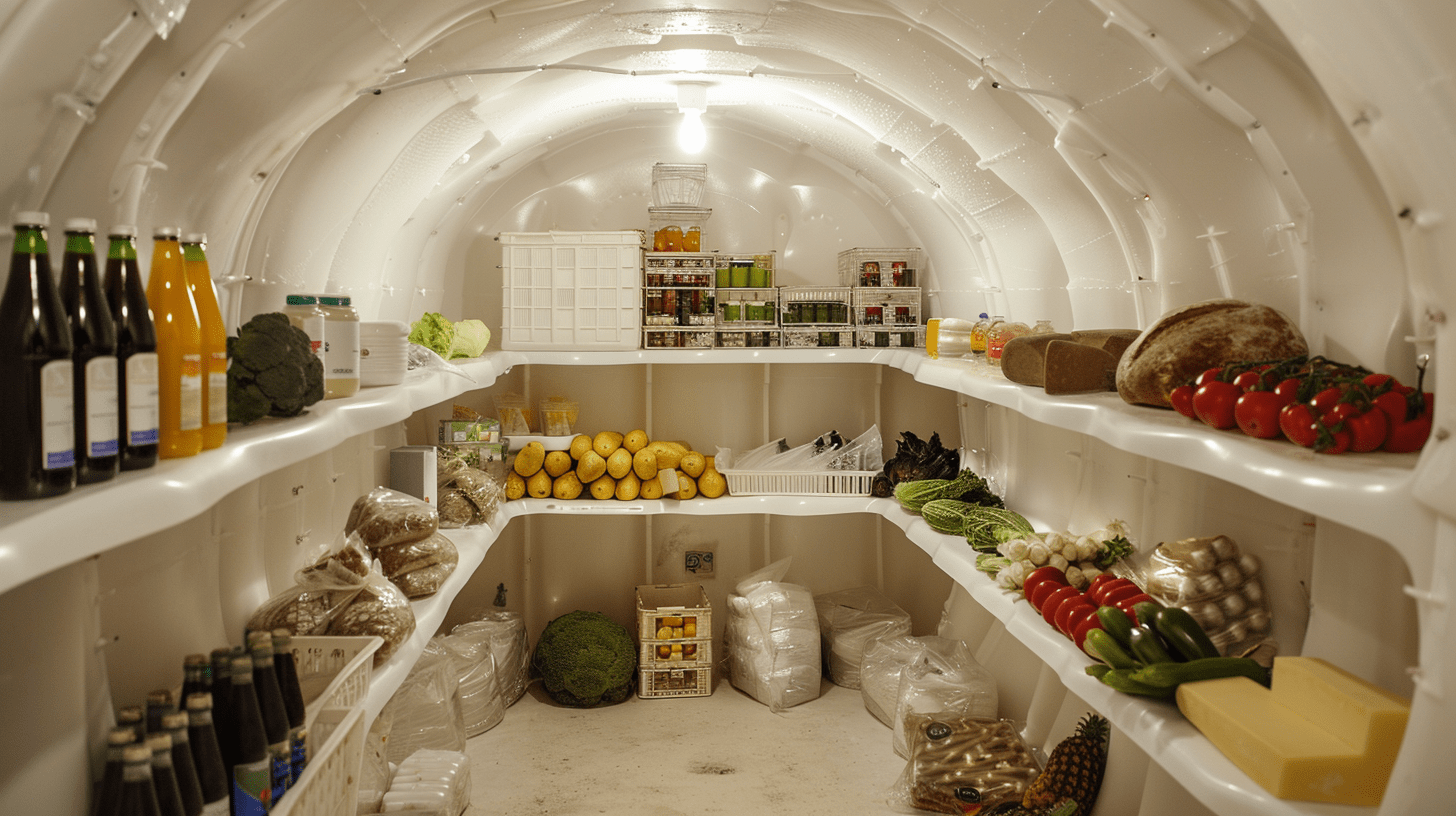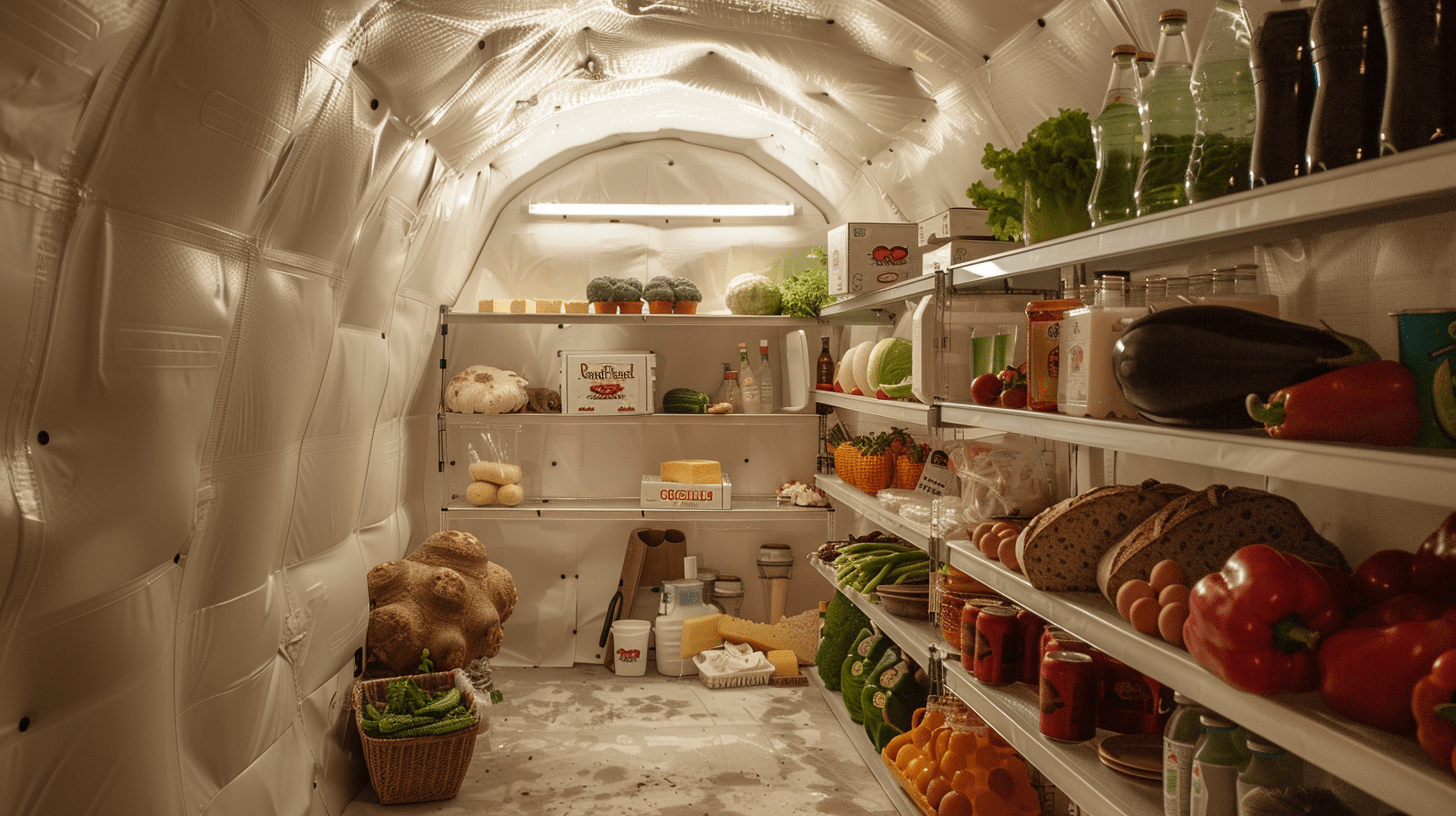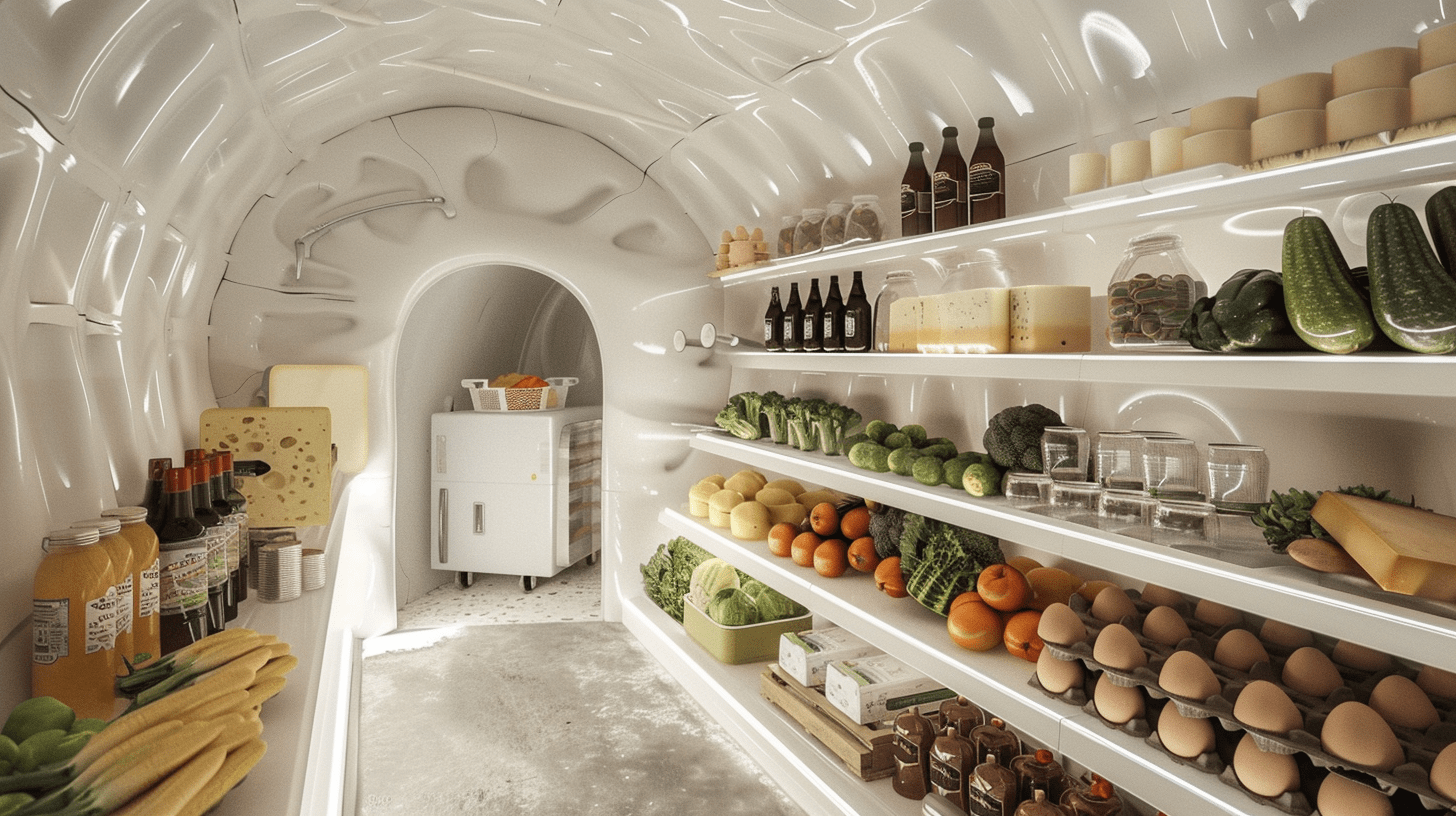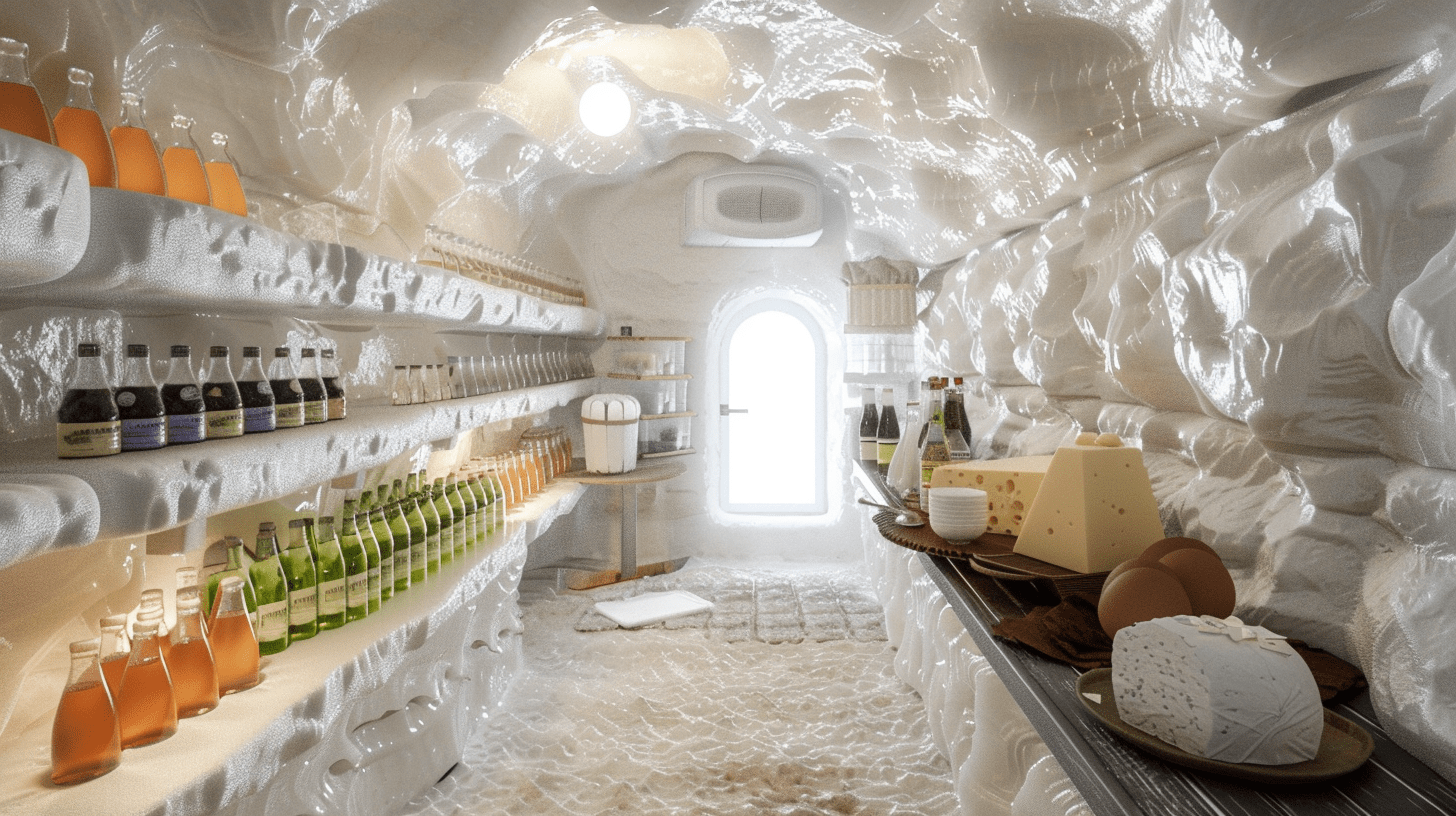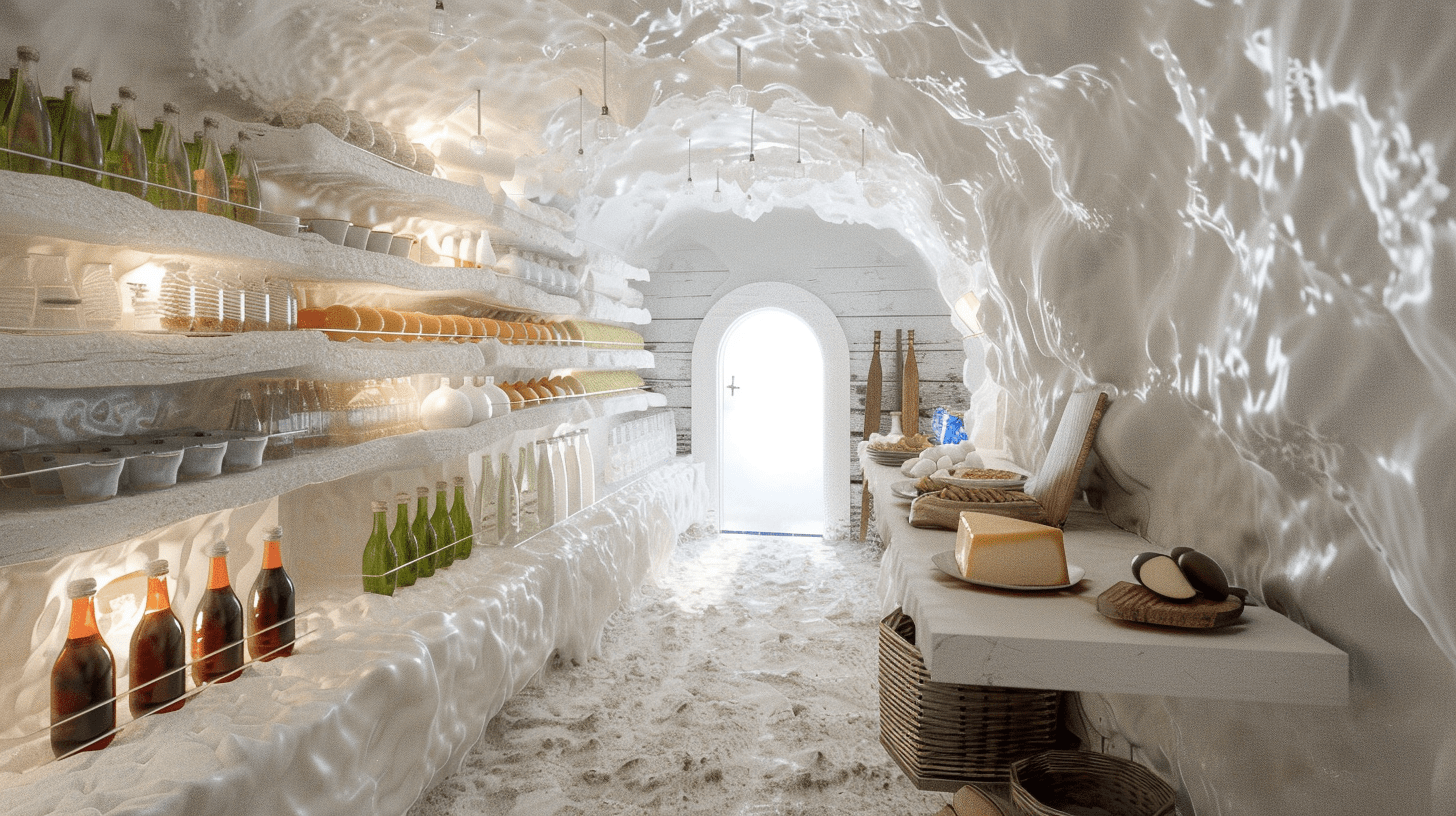Like a hidden gem buried beneath our feet, underground refrigeration, particularly through technologies like Aquifer Thermal Energy Storage (ATES), holds the key to significantly reducing energy consumption. You’ve likely marveled at the idea of tapping into the consistent temperatures of the earth for cooling and heating, but have you considered how this method not only cuts down on electricity and natural gas usage but also propels us towards a more sustainable and resilient energy system?
As we explore its workings, benefits, and applications, you’ll find yourself intrigued by the potential this technology has to transform our approach to energy efficiency. Why not uncover the layers of this underground solution that could redefine our energy habits?
Understanding Underground Refrigeration
To grasp underground refrigeration, it’s essential to recognize that this method leverages the stable ground temperature to cut down on energy consumption. By burying refrigeration pipes underground, this innovative approach facilitates an efficient exchange of heat, maintaining cooler temperatures without the hefty energy usage tied to traditional cooling systems. You’re not just tapping into the earth’s natural coolness; you’re stepping into a realm of significant energy savings and cost reductions.
This cooling strategy isn’t just about beating the heat in a more efficient manner; it’s a step towards integrating renewable energy sources into everyday life. By reducing the demand on conventional energy sources for cooling, underground refrigeration paves the way for a more sustainable and environmentally friendly approach to temperature control. The environmental benefits are clear: by slashing energy consumption, you’re contributing to a decrease in the overall carbon footprint.
Moreover, the cost savings are nothing to scoff at. With the reduced need for energy-intensive cooling methods, you’ll find that the expenses tied to keeping spaces cool plummet. In essence, underground refrigeration isn’t just an efficient cooling method; it’s a financially savvy and eco-conscious choice that aligns with the growing push towards sustainability.
Constant Earth Temperatures
Delving into the heart of underground refrigeration, you’ll find that it’s the constant Earth temperatures, typically ranging between 8-16°C, that make this cooling method so energy-efficient and reliable. This natural consistency offers an ideal backdrop for efficient cooling processes, eliminating the need for high-energy solutions prevalent in traditional systems. By tapping into this sustainable source, underground refrigeration stands out as a beacon of innovation in reducing energy consumption.
The beauty of underground refrigeration lies in its ability to leverage the Earth’s thermal inertia. This means that, despite the changing weather above ground, temperatures below remain stable, providing a reliable foundation for energy-efficient cooling. As a result, cooling applications that utilize this method can significantly minimize energy usage, ensuring that the desired coolness is maintained without the hefty energy bills or environmental impact associated with conventional cooling methods.
How It Works
Exploring how underground refrigeration works, it’s crucial to understand that this system taps into the Earth’s constant temperatures by circulating a refrigerant fluid through underground pipes. This innovative approach leverages the stable temperature of the ground as a natural ally in your quest for efficient cooling.
Here’s the lowdown: the ground beneath our feet maintains a remarkably consistent temperature year-round, making it an ideal heat sink or source. This consistency is what underground refrigeration systems exploit.
By circulating a refrigerant fluid in pipes buried underground, these systems facilitate an efficient energy transfer between your building and the earth. When you’re aiming to cool your space, the system works by absorbing the excess heat from your building and transferring it to the ground. This process not only provides cooling but does so with significantly less energy than traditional air conditioning systems demand.
The beauty of this technology lies in its simplicity and the elegance of using what’s naturally available – the ground’s stable temperature – to reduce the reliance on electricity for cooling. As the refrigerant fluid moves through the underground pipes, it engages in this constant cycle of energy transfer, making underground refrigeration a smart choice for anyone looking to cut down on energy usage without sacrificing comfort.
Benefits for Energy Efficiency
Frequently, underground refrigeration systems significantly reduce energy consumption by efficiently utilizing the Earth’s stable temperature for cooling. By tapping into this constant underground climate, you’re not just saving money but also contributing to a more sustainable future.
Here’s how underground refrigeration boosts energy efficiency:
- Leverages Earth’s Natural Thermal Properties: Unlike traditional air conditioning, which relies heavily on electricity to cool spaces, underground refrigeration uses the ground’s stable temperature. This significantly reduces electricity usage.
- Sustainable Cooling Solution: By depending less on conventional cooling methods, you’re choosing a more environmentally friendly option. This sustainable cooling approach minimizes your carbon footprint.
- Cost Reductions: The energy savings from utilizing underground refrigeration directly translate into lower utility bills. Over time, the initial investment in these systems pays off through significant cost reductions.
- Environmental Benefits: By slashing energy consumption, you’re not only saving money but also contributing to a larger cause. The reduction in reliance on fossil fuels and decrease in greenhouse gas emissions are pivotal environmental benefits of adopting underground refrigeration.
In essence, by choosing underground refrigeration, you’re opting for a method that enhances energy efficiency, offers cost reductions, and supports environmental sustainability—all while keeping your space comfortably cool.
Applications in Different Sectors
Underground refrigeration systems, serving as a versatile solution, find their place across various sectors including commercial buildings, data centers, food storage facilities, and industrial plants, significantly enhancing energy efficiency and operational effectiveness. Utilizing the stable temperature of the Earth for cooling, these systems reduce energy consumption while maintaining consistent temperatures for sensitive products. This not only leads to energy savings but also operational efficiency.
Here’s how underground refrigeration is applied in different sectors:
| Sector | Application | Benefit |
|---|---|---|
| Commercial Buildings | Cooling office spaces | Reduces electricity usage, lowers carbon emissions |
| Data Centers | Maintaining equipment at optimal temperatures | Enhances operational efficiency, prevents overheating |
| Food Storage Facilities | Preserving perishable goods | Ensures stable temperature, prolongs shelf life |
| Industrial Plants | Process cooling | Improves productivity, reduces operational costs |
Comparisons With Traditional Cooling
After examining how underground refrigeration benefits various sectors, let’s compare it with traditional cooling methods to understand its energy-saving potential. When you look at both side by side, the advantages of underground refrigeration in terms of energy efficiency and sustainability become clear. Here’s why:
- Energy Savings: Underground refrigeration systems can achieve up to 50% energy savings compared to traditional cooling methods. This is mainly because they utilize the stable temperature of the ground to cool buildings more efficiently.
- Stable Temperature Utilization: The constant ground temperature allows underground refrigeration to operate more efficiently and sustainably than above-ground systems, reducing the need for excessive energy consumption.
- Lower Maintenance Costs and Longer Equipment Lifespan: Unlike traditional cooling systems, underground cooling systems have lower maintenance costs and offer a longer equipment lifespan. This not only saves you money in the long run but also contributes to a more sustainable built environment.
- Reduction in Greenhouse Gas Emissions: By opting for underground refrigeration, you’re also playing a part in reducing greenhouse gas emissions. This system contributes to a more energy-efficient and sustainable built environment, making it a green choice for cooling needs.
In essence, underground refrigeration offers a compelling alternative to traditional cooling systems, boasting significant energy savings and environmental benefits.
Challenges and Solutions
Despite its benefits, you’ll find that underground refrigeration systems encounter specific challenges, particularly with efficient heat exchange due to the variability of ground temperatures. This variance can make it tough to maintain consistent cooling, leading to potential energy losses. Yet, there’s a silver lining. By tapping into geothermal energy, cooling systems underground can leverage the earth’s stable temperatures to improve efficiency. This not only aids in energy conservation but also enhances the overall performance of the refrigeration system.
Moreover, integrating groundwater circulation systems can significantly boost the efficiency of underground cooling. These systems facilitate a more dynamic exchange of thermal energy, ensuring that your underground space stays cool without excessive energy consumption. Another game-changer is the incorporation of thermal energy storage technologies. These innovations allow for the capture and storage of cool energy during off-peak hours, which can be used when demand spikes, optimizing energy usage further.
Future of Sustainable Cooling
Exploring the future of sustainable cooling, it’s clear that underground refrigeration systems are at the forefront of reducing energy consumption and promoting environmental stewardship. Leveraging the stable temperature of Earth’s subsurface, these systems offer a path to energy-efficient cooling that not only lowers operational costs but also brings significant environmental benefits.
Here’s what you can expect from the future of sustainable cooling:
- Increased Adoption: As awareness grows, more industries and communities will turn to underground refrigeration to reduce energy consumption and achieve cost savings.
- Technological Advancements: Future innovations aim to enhance the cooling efficiency and scalability of underground refrigeration systems, making them suitable for a wider range of applications.
- Contribution to Decarbonizing the Energy Sector: By shifting towards sustainable cooling solutions like underground refrigeration, we’re taking significant steps in combatting climate change and decarbonizing the energy sector.
- Global Impact: The role of underground refrigeration in promoting sustainable cooling practices is pivotal in achieving global energy efficiency goals.
As you look towards the future, remember that embracing underground refrigeration isn’t just about cooling efficiency; it’s about taking a stand for environmental stewardship and paving the way for a more sustainable world.
Conclusion
In conclusion, you’ve seen how underground refrigeration, particularly through technologies like ATES, plays a pivotal role in slashing energy consumption. By leveraging the earth’s constant temperatures, it efficiently stores heat or cold, providing a sustainable solution for heating and cooling needs.
This not only cuts down on electricity and natural gas usage but also pushes us closer to our sustainability goals. Despite the challenges, the future looks bright for sustainable cooling, promising a greener, more resilient energy system.
